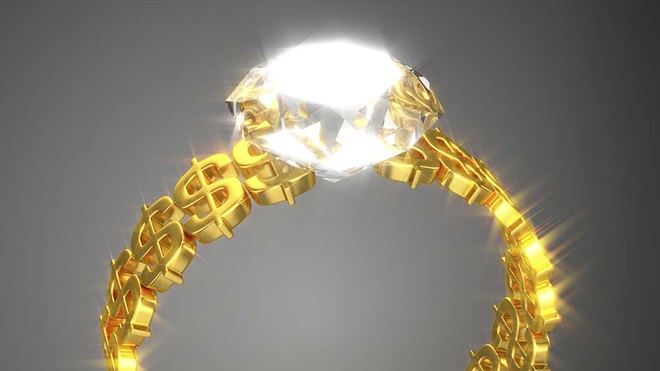Many of us have jewellery lying around we no longer wear – a broken necklace or an inherited bracelet that's out of fashion. With gold prices soaring, it may well be worth selling it and using the money to buy something you really like - or to pay the electricity bill. In this article we take a look at different options for turning your gold into cash.
On this page:
- Cash-for-gold kiosks
- Selling on eBay
- Consider an antique dealer
- Getting a fair price for your jewellery
- Calculating the gold price
Cash-for-gold kiosks
In recent years, kiosks offering cash for gold – some with shiny offers – have opened in shopping centres. But do they give you a fair price?
Armed with a ring and two necklaces, CHOICE visited 10 jewellers and gold-buying shops in Sydney in 2010, and was offered between 39% and 89% of the gold value for the items. We were quoted between $154 and $300 for the same three items of gold jewellery. Their gold value was about $400, so the highest price we obtained is roughly comparable, although obviously nowhere near the retail value, which at $1900 is significantly higher, as it includes workmanship and a retail margin.
We found jewellers in the CBD usually offered the best price, especially when we negotiated, whereas two of the cash-for-gold kiosks in shopping centres were a rip-off.
Selling on eBay
Our sister organisation in the UK, Which?, tried their luck at selling unwanted gold jewellery on eBay and found prices were far more competitive than those offered by either TV-advertised or high street gold buyers. Which? sold a batch of gold bangles, bracelets and necklaces on eBay and got five times more than the price offered by the TV-advertised gold buyers. The £215 gold bracelet, for example, sold for £69 on eBay. TV-advertised gold buyers had offered Which? just £12 and high street jewellers, £46, for the same piece. So, it pays to investigate selling your jewellery online.
Consider an antique dealer
Shops buying gold usually have no interest in the brand, style or design of an item - or what you originally paid for it - as they're only going to melt it down. For old, intact jewellery, try an antique dealer.
Getting a fair price for your jewellery
- Weigh the items on a kitchen scale to get the approximate weight, check the gold price and calculate what they are worth.
- Aim to get at least 70–80% of the gold value.
- Try at least three different outlets. Ring them first and ask how much they pay. Look for jewellers and specialist gold-buying businesses or pawnshops.
- Go to at least three different gold-buying businesses armed with your quotes and be prepared to ask for a better deal. Don't be shy, as competition is strong and many shop owners will negotiate. Don't be pressured to sell on the spot; walk away if you're not sure.
- You'll usually get better prices for heavier items (or bundle of items) and have more room to negotiate.
- Be careful if you have any items with gemstones such as diamonds, as few gold shops pay prices to reflect their value – most pay only for the gold content. Ask the shops if and what they pay for any diamonds or other gemstones of value. Alternatively, go to a reputable jeweller and ask them to take out the stones.
- If you're going to a gold party hosted by a friend, only part with your gold if they offer you a good price. You may not be able to negotiate as much at a gold party, as your host will get a commission.
- Call and talk to a real person first before selling your gold online. Make sure you get a quote beforehand or that your jewellery will be returned without charge if the offer is too low.
Calculating the gold price
The growing prevalence of gold-buying shops coincides with a dramatic increase in the price of gold over the past decade – it has trebled from $US435 per ounce in 2004 to $US1305 in 2014.
You can check current gold prices at www.kitconet.com by clicking on "Gold". Click on the Australian flag to see the price per kg of gold in $AUD (on top of the graph for 24-hour gold price). You'll need to know the type of gold the jewellery is made from; most times you can see a stamp on the item.
A "375" stamp, for example, means 9-carat gold, which is 37.5% gold, so divide the gold price by 100 and multiply it by 37.5 to get the price for 1kg of 9-carat gold, then divide this by 1000 to get the price per gram:
- 9 carat – stamp 375, 37.5% gold content
- 18 carat – stamp 750, 75% gold content
- 22 carat – stamp 916, 91.6% gold content.
We're on your side
For more than 60 years, we've been making a difference for Australian consumers. In that time, we've never taken ads or sponsorship.
Instead we're funded by members who value expert reviews and independent product testing.
With no self-interest behind our advice, you don't just buy smarter, you get the answers that you need.
You know without hesitation what's safe for you and your family.
And you'll never be alone when something goes wrong or a business treats you unfairly.
Learn more about CHOICE membership today
Stock images: Getty, unless otherwise stated.



